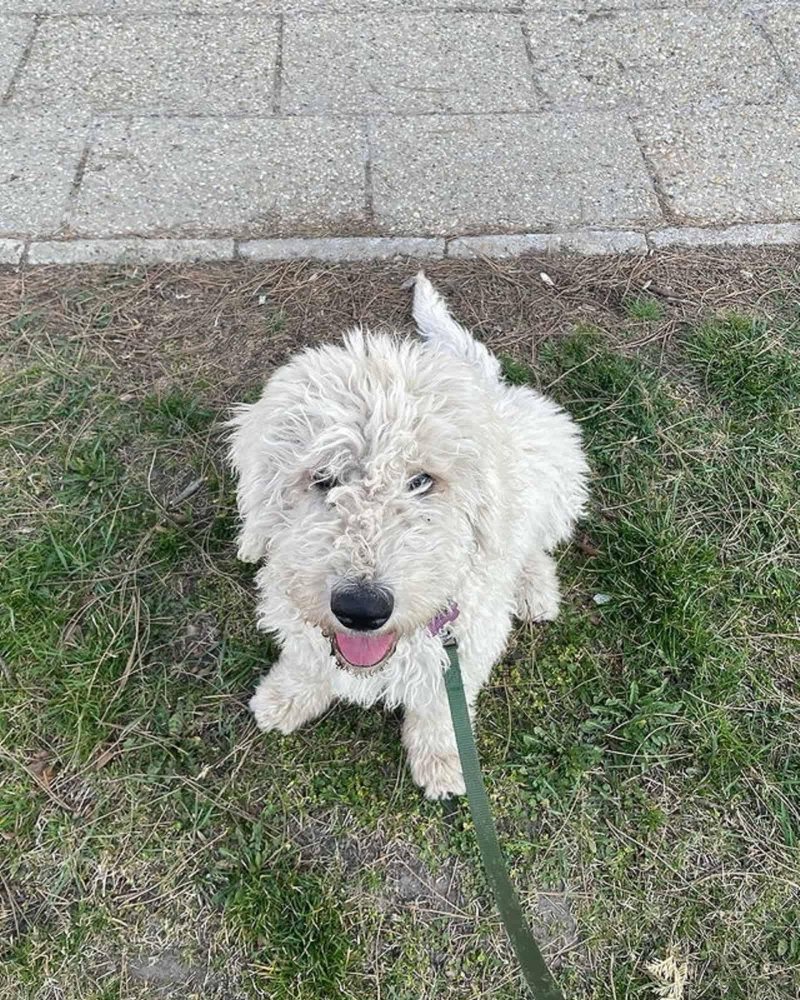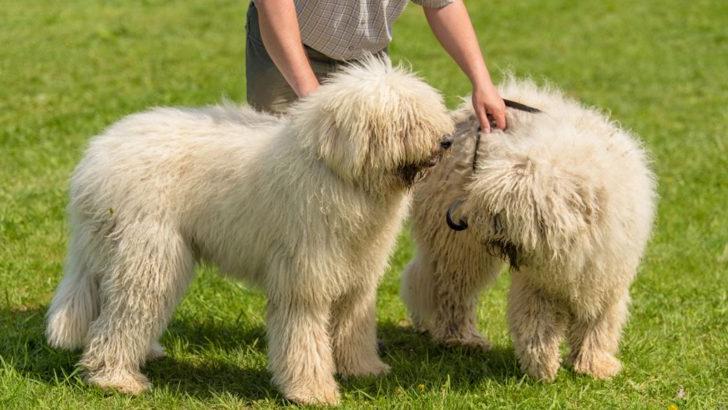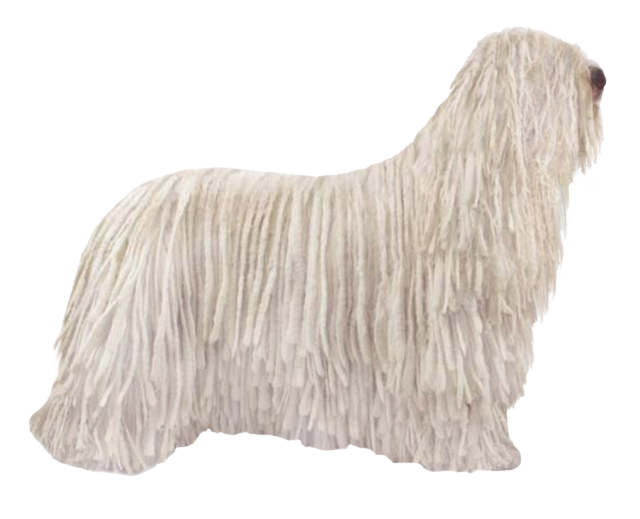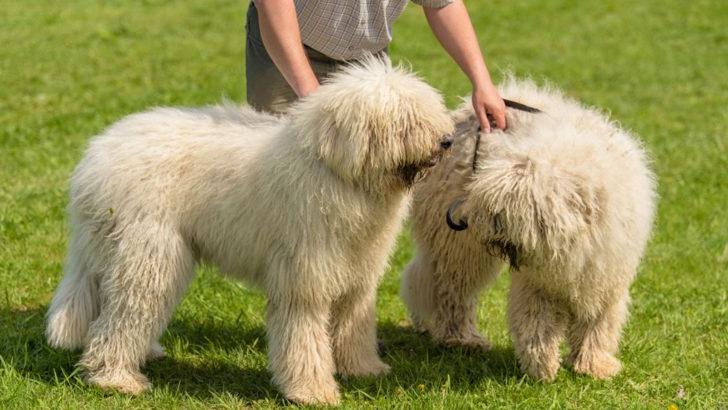Imagine a mop with a heartbeat. That’s the Komondor, a dog breed that stands out with its unique, corded coat resembling a floor mop. This article dives into the fascinating world of the Komondor, exploring its characteristics, rich history, and how to care for this extraordinary breed. Originating from Hungary, the Komondor has been a loyal guardian of livestock for centuries. Its distinctive coat not only provides protection from harsh weather but also serves as camouflage against predators. As we journey through the Komondor’s past, you’ll discover how this breed has evolved from a working dog to a cherished companion. Whether you’re considering adding a Komondor to your family or simply curious, this guide will enlighten you.
The Komondor: A Guardian with a Rich Heritage

Early Development of the Breed
The Komondor’s roots trace back to the nomadic Magyars who brought these dogs to Hungary over a thousand years ago. Bred for their protective instincts, these dogs were essential in safeguarding flocks from predators. Their unique coat, resembling dreadlocks, developed as a natural defence against the harsh elements and potential threats.
Role in Hungarian Livestock Protection
In the vast Hungarian plains, the Komondor was more than just a pet; it was a vital part of livestock management. With a keen sense of duty, these dogs would blend into the flock, their coats acting as both armour and disguise. This made them formidable opponents to any predator daring enough to approach.
Key Historical Figures and Events
Throughout history, the Komondor has been celebrated in Hungarian culture. Notable figures, such as King Matthias Corvinus, are said to have valued these dogs for their loyalty and bravery. The breed’s reputation spread, and by the 20th century, it had gained international recognition, particularly after World War II when its numbers dwindled, sparking efforts to preserve this unique breed.
Physical Characteristics
Standing tall and proud, the Komondor is a large, muscular dog with a distinctive corded coat. This coat, which can take up to two years to fully form, is not just for show. It provides insulation and protection, making the Komondor well-suited to various climates. Despite their imposing size, these dogs are agile and quick, traits that have served them well in their traditional roles.
Appearance and Unique Traits
The Komondor is a sight to behold, with its large, imposing stature and a coat that’s truly one-of-a-kind. This breed is known for its distinctive corded coat, which resembles a mop and can take up to two years to fully develop. The cords are dense and woolly, providing excellent protection against the elements. Typically, the coat is white, which helps the Komondor blend in with the sheep it traditionally guarded.
Standing tall, these dogs are muscular and robust, built for endurance and agility. Despite their size, they move with surprising grace and speed, a testament to their heritage as working dogs. Their physical presence is both commanding and reassuring, making them excellent guardians.
Temperament and Behaviour
Komondors are known for their calm and steady temperament. They are fiercely loyal and protective, traits that have been honed over centuries of guarding livestock. While they may be reserved with strangers, they are affectionate and gentle with their family. These dogs are independent thinkers, often assessing situations on their own, which can be both a challenge and a delight for their owners. With proper training and socialisation, they make devoted companions.
Komondor: The Ideal Family Guardian

Personality Traits
The Komondor is a breed that embodies loyalty, independence, and a protective nature. These dogs are incredibly devoted to their families, often forming strong bonds with their human companions. Their independent streak means they can think for themselves, a trait that has been essential in their role as livestock guardians. This independence, however, doesn’t diminish their protective instincts. They are always on alert, ready to defend their loved ones if necessary.
Suitability as a Family Pet
As a family pet, the Komondor is both a loving companion and a vigilant guardian. Their protective nature makes them excellent watchdogs, while their loyalty ensures they are gentle and affectionate with family members. They thrive in environments where they can be part of the family, enjoying both companionship and a sense of purpose.
Interaction with Children and Other Animals
Komondors are generally good with children, especially when raised with them. Their gentle nature and patience make them suitable playmates, although supervision is always recommended due to their size. With other animals, early socialisation is key. They can coexist peacefully with other pets if introduced properly, but their protective instincts may kick in if they perceive a threat.
Training and Exercise Needs
Training a Komondor requires patience and consistency. Their independent nature means they may not always be eager to follow commands, but with positive reinforcement, they can learn effectively. Regular exercise is crucial to keep them healthy and happy. They enjoy activities that challenge both their minds and bodies, such as long walks or interactive play sessions.
Training and Care for Your Komondor

Importance of Early Training and Socialisation
Getting a head start on training and socialisation is crucial for a Komondor. These dogs are naturally protective, so introducing them to various people, pets, and environments early on helps them grow into well-rounded adults. It’s all about setting the stage for a confident and balanced dog.
Recommended Training Techniques
When it comes to training, patience and consistency are your best friends. Komondors respond well to positive reinforcement, so reward-based methods work wonders. Keep sessions short and engaging to hold their interest. Remember, they’re independent thinkers, so a little creativity in your approach can go a long way.
Daily Exercise Requirements and Activities They Enjoy
Komondors need regular exercise to stay fit and happy. They love activities that challenge both their minds and bodies. Think long walks, interactive games, or even agility training. Keeping them active not only maintains their health but also strengthens your bond.
Health and Lifespan
With proper care, a Komondor can live a healthy life of 10 to 12 years. Regular vet check-ups, a balanced diet, and plenty of exercise are key to their well-being. Like any breed, they can be prone to certain health issues, so staying informed and proactive is essential.
Health and Grooming for Your Komondor
Common Health Issues
Komondors are generally healthy, but like any breed, they can be prone to certain health issues. Hip dysplasia and bloat are two conditions to watch out for. Regular vet visits and a healthy diet can help manage these risks. Keeping an eye on their weight and ensuring they get enough exercise is crucial.
Average Lifespan and Health Tips
With the right care, a Komondor can live between 10 to 12 years. To keep them healthy, provide a balanced diet rich in nutrients. Regular exercise is a must, not just for their physical health but also for their mental well-being. A happy Komondor is an active one.
Preventative Care Recommendations
Preventative care is all about being proactive. Regular check-ups with the vet, vaccinations, and dental care are essential. Keep their ears clean and check their eyes regularly. A little attention goes a long way in preventing potential health issues.
Grooming and Maintenance
The Komondor’s unique coat requires special attention. Regularly separate the cords to prevent matting and keep them clean. Bathing can be a bit of a task, but it’s necessary to maintain their coat’s health. Patience and consistency in grooming will keep your Komondor looking and feeling their best.
Coat Care and Grooming for Your Komondor

Coat Care and Grooming Routines
The Komondor’s coat is its most striking feature, but it requires a bit of dedication. Regularly separating the cords is essential to prevent matting. This process can be time-consuming, but it’s crucial for maintaining the coat’s health and appearance. Bathing a Komondor is a task that requires patience, as their dense cords take a while to dry. A thorough rinse and careful drying are key to avoiding any skin issues.
Shedding and Seasonal Grooming Tips
Unlike many breeds, Komondors don’t shed in the traditional sense. Instead, their cords grow continuously, requiring regular maintenance. Seasonal changes might prompt a bit more attention, especially during wet months when the coat can trap moisture. Keeping the cords clean and dry is vital to prevent any unpleasant odours or skin problems.
Diet and Nutrition
A balanced diet is fundamental for a Komondor’s health. High-quality dog food, rich in protein and essential nutrients, supports their active lifestyle and maintains their coat’s condition. Portion control is important to prevent obesity, which can lead to health issues like hip dysplasia. Fresh water should always be available, and occasional treats can be used for training and rewarding good behaviour.
Nutritional Needs and Feeding for Your Komondor

Nutritional Needs for Optimal Health
Komondors thrive on a balanced diet rich in protein and essential nutrients. High-quality dog food is a must to support their active lifestyle and maintain their unique coat. Look for foods with real meat as the first ingredient and avoid fillers like corn and soy.
Foods to Include and Avoid
Include lean meats, fish, and vegetables in their diet. These provide the necessary vitamins and minerals. Avoid foods high in fat and artificial additives, as these can lead to obesity and other health issues. Fresh water should always be available.
Feeding Schedules and Portion Recommendations
Feed your Komondor twice a day to maintain energy levels and prevent bloat, a common issue in large breeds. Portion sizes depend on their age, weight, and activity level, so consult your vet for tailored advice. Keep an eye on their weight to avoid overfeeding.
Fun Facts and Trivia
Did you know the Komondor’s coat can weigh up to 15 kilograms? This unique feature not only protects them but also makes them one of the most recognisable breeds. Despite their size, they are surprisingly agile and can reach speeds of up to 30 km/h!
Fascinating Komondor Tidbits and Notable Appearances
Interesting Tidbits about the Breed
The Komondor is not just a pretty face with its iconic dreadlock-like coat. This breed is known for its incredible strength and agility, traits that have been honed over centuries of guarding livestock. Despite their large size, Komondors are surprisingly quick and can cover ground with impressive speed. Their coat, which can weigh up to 15 kilograms, serves as both protection and camouflage, blending seamlessly with the sheep they traditionally guarded.
Another fun fact: the Komondor’s coat is naturally water-resistant, making it well-suited to various weather conditions. This unique feature has helped them thrive in the diverse climates of their native Hungary.
Famous Komondors in Media or History
While the Komondor may not be as frequently seen in movies or TV shows as some other breeds, it has made its mark in history. The breed was notably featured in the 2004 film “Son of the Mask,” where its distinctive appearance added a touch of whimsy to the storyline. Historically, the Komondor has been a symbol of Hungarian culture, often depicted in art and literature as a loyal and brave guardian.
Final Thoughts

The Komondor is a remarkable blend of tradition and loyalty. This breed’s unique characteristics and rich history make it a fascinating companion for those willing to embrace its needs. From its origins as a livestock guardian to its role as a family protector, the Komondor exemplifies dedication and resilience. Embracing a Komondor means committing to a journey of mutual respect and care. Consider welcoming this extraordinary breed into your life, and experience the joy of a truly unique canine companion.
